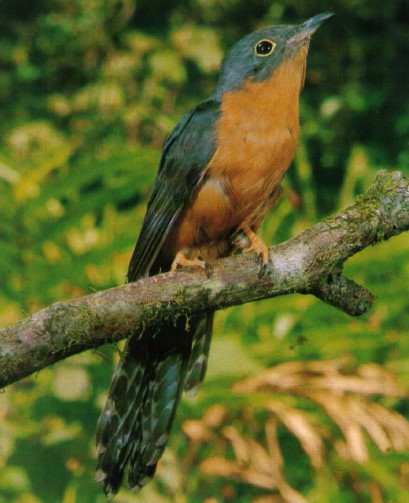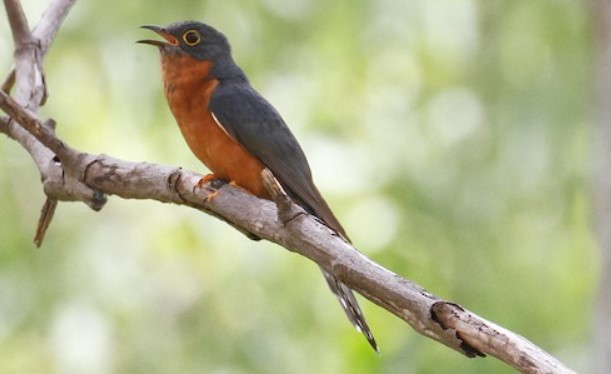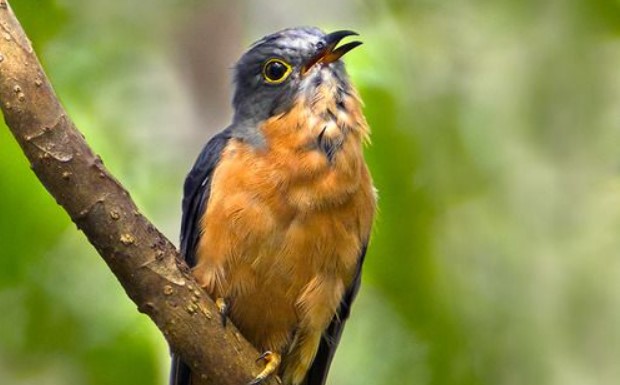There is very little known about the chestnut-breasted cuckoo (Cacomantis castaneiventris) because of its remote and inaccessible habitat and secretive habits. This cuckoo spends most of its time in the shrubbery and understory of the tropical rainforest. The call of the Chestnut-breasted Cuckoo is a richly trilled falling whistle, similar to the Fan-tailed Cuckoo. Sometimes, there is another call type, perhaps given by a female, which is a mournful three-note song, the first and third notes leisurely and up-slurred, the second shorter.
Nesting and breeding occur in October-December. Parasitic species that build domed nests. Chestnut-breasted Cuckoo lays one egg, which is faint pinkish-white, marked all over with spots of mid-brown and fainter pale grey; oval shape, about the size of 21 x 15 mm.
Chestnut-breasted Cuckoo flies to the ground to pick up its food by perch-and pounce: caterpillars, ticks, beetles, and grasshoppers. The cuckoo is sedentary, but it moves singly and in pairs. It is possibly more abundant in Australia than recorded but is common in New Guinea. Parasitic on scrub wrens, the Chestnut-breasted Cuckoo lays its eggs mainly in the nests of Tropical Scrub-wrens on the Cape York Peninsula and in those of Large-billed Scrub-wrens to the south. Like the Fan-tailed Cuckoo, it selects hosts that build domed nests and lays eggs superficially similar to those of scrub wrens. The size of the Chestnut-breasted Cuckoo is about 230–250 mm.
Moreover, both sexes are similar; females are duller ventrally. Upper parts, including the head, side of the face, and chin, are dark steel-grey with a metallic tinge. The wings are brown-black, with a broad cream-white stripe on the underside. The tail is metallic purple-black tipped white, the white triangular notching on the inner tail feathers becoming bars on the outermost feathers. The underparts are rich cinnamon-to-chestnut-rufous. Eyes are mid-to-red-brown, and eye rings are lemon to yellow. Bill is black to grey-black with a basal portion of lower mandible buff to brownish yellow; mouth orange to orange-buff. Feet dull orange to yellow; claws dusky.
Also, the immature bird is duller than adults. The upper parts are rust-brown, rufous on the back and rump. Underparts are pale cinnamon. Chestnut-breasted Cuckoo is confined to rainforest tracts and wet gullies of eastern Cape York Peninsula, from Torres Strait south to Endeavour and Bloomfield Rivers and Daintree region. This cuckoo is also found in Papua New Guinea, Indonesia, and Aru Islands. There are three races; only one is found in Australia.
Read More: Pallid Cuckoo (Cuculus pallidus)



